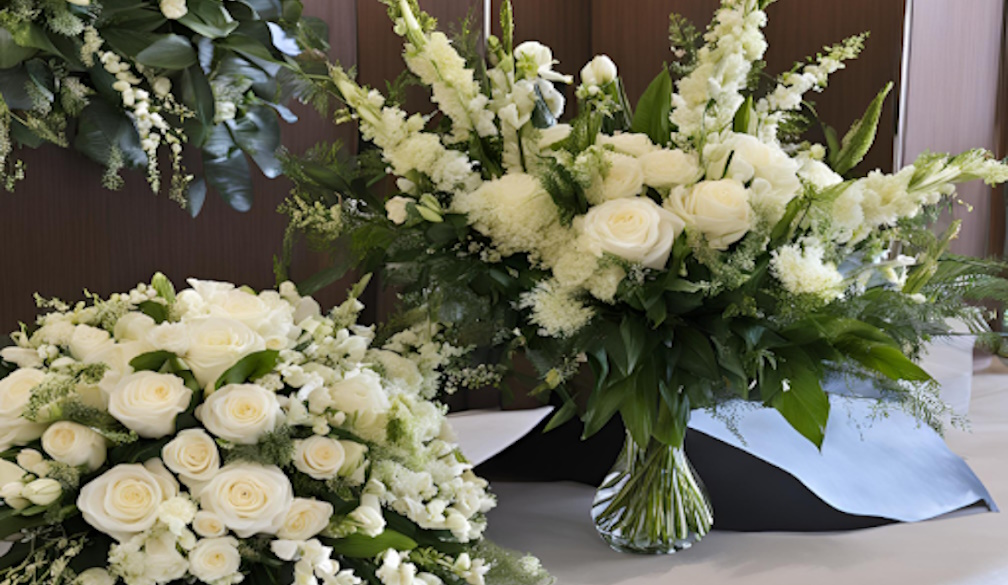From Ancient Rites to Modern Tributes: The Enduring Tradition of Funeral Flowers

The practice of adorning the deceased with flowers is a time-honoured tradition that has spanned cultures and millennia. From ancient civilizations to modern societies, flowers have played a significant role in funeral rites, offering comfort, symbolism, and beauty during times of mourning. This article delves into the fascinating history of funeral flowers, exploring their evolving role in rituals across different cultures and their enduring significance in contemporary mourning practices.
Ancient Origins: Flowers as Offerings to the Gods and Symbols of Rebirth
The use of flowers in funeral rites dates to the earliest human civilizations. Ancient Egyptians, for instance, believed that flowers held spiritual power and could bring joy to the deceased in the afterlife. They filled tombs with colourful blooms like lotus flowers, which symbolized rebirth and the sun's daily journey through the underworld.
In Ancient Greece and Rome, flowers were also integral to funeral ceremonies. They adorned graves and tombs, serving as offerings to the gods and symbols of hope for the deceased's journey to the Elysian Fields or the afterlife. Round or circular floral arrangements, also known as wreaths, made of fragrant herbs and flowers like myrtle and roses were commonly used to honour the dead and ward off evil spirits.
The Language of Flowers in Victorian Times: Hidden Messages of Grief and Remembrance
During the Victorian era, the use of flowers in funerals reached its zenith. The Victorians developed a complex "language of flowers," where specific blooms held symbolic meanings related to death, mourning, and remembrance. For example, rosemary signified remembrance, white lilies represented purity and innocence, and red roses symbolized enduring love.
Funeral wreaths, often made of evergreen foliage like laurel or ivy, were popular during this time, as they represented immortality and the everlasting nature of the soul. Casket sprays and other arrangements were meticulously crafted to convey specific messages of condolence, love, and respect for the deceased.
Modern Tributes: Flowers as Expressions of Sympathy and Love
While the language of flowers may have faded somewhat in modern times, the tradition of using flowers in funerals remains strong. Today, flowers are seen as a way to express condolences, honour the deceased's life, and offer comfort to grieving families and friends.
Floral arrangements for funerals have evolved to reflect contemporary tastes and styles. While traditional wreaths and casket sprays are still popular, modern florists offer a wide array of options, including standing sprays, floral baskets, and personalized tributes that incorporate the deceased's favourite flowers or colours.
Cultural Variations in Funeral Flower Traditions
The use of flowers in funeral rites varies across different cultures and religions. In some cultures, white is the predominant colour for funeral flowers, while others prefer bright and vibrant hues. Some religions prohibit certain types of flowers, while others have specific traditions regarding the placement of arrangements.
For instance, in many Asian cultures, white chrysanthemums are the traditional flower of mourning, while in Hindu and Buddhist traditions, marigolds are commonly used to adorn funeral pyres and symbolize the fleeting nature of life.
Choosing the Right Funeral Flowers: A Matter of Respect and Preference
When selecting funeral flowers, it's important to consider the cultural and religious customs of the bereaved family. Additionally, the relationship to the deceased should be considered. Close family members may choose larger and more elaborate arrangements, while friends and acquaintances may opt for smaller bouquets or plants.
Above all, the choice of funeral flowers should be guided by respect, love, and a desire to offer comfort during a difficult time. Whether a simple bouquet or a grand display, the gesture itself speaks volumes.
Conclusion
The tradition of using flowers in funeral rites is a testament to their enduring power to provide solace, express emotions, and honour the memory of loved ones. From ancient times to the present day, flowers have served as symbols of hope, rebirth, and remembrance. Whether you choose a traditional arrangement or a modern tribute, your gesture of sending funeral flowers will be a meaningful and comforting way to express your condolences and celebrate a life well-lived.





